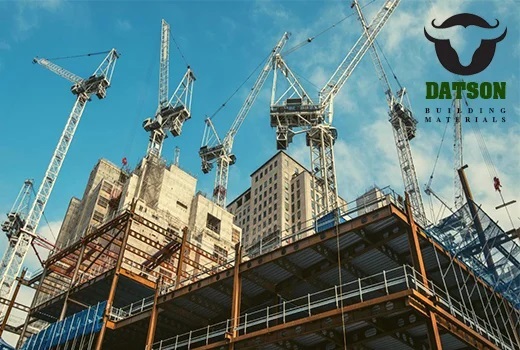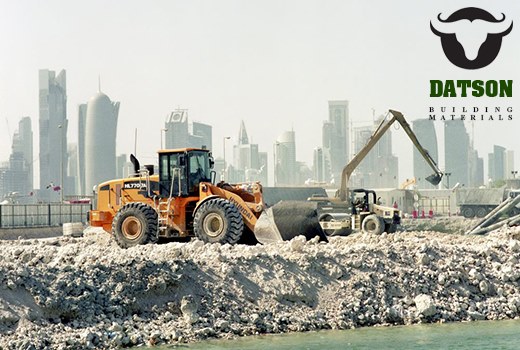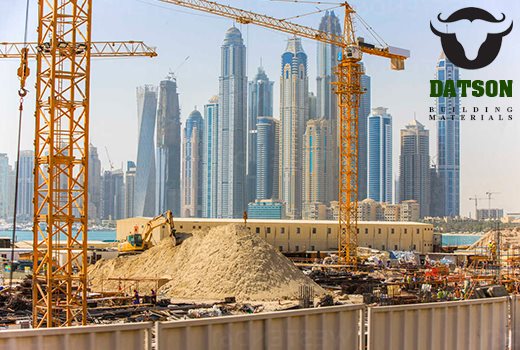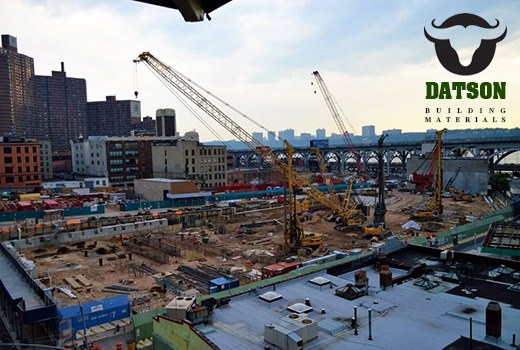In today’s construction world, everyone’s looking for materials that are strong, reliable, and efficient. While high-tech solutions often steal the spotlight, some of the most useful materials are simple and natural like talc. You might know talc from everyday products, but in construction, it does a lot more than most people realize.
This article explains how talc helps make building materials better. From making paints smoother and more durable, to helping concrete stay strong and easy to work with, talc powder plays an important role in many construction products. It’s affordable, long-lasting, and even supports eco-friendly building. If you want to learn how one simple mineral can make a big difference in modern construction, read on.
Properties of talc as an Ideal construction material
When it comes to choosing the right materials for construction, performance and durability are always top priorities. One mineral that consistently proves its value across various building applications is talc. Thanks to its unique physical and chemical characteristics, talc enhances the quality of construction materials in several important ways. From improving strength to adding a smooth finish, talc helps create reliable, long-lasting products that meet the demands of modern construction. Below are some of the key properties that make talc an ideal component in high-performance building materials:
Strength and Reinforcement
The platy structure of talc imparts strength and rigidity into construction materials like paints, coatings, or sealants. It acts as a reinforcement, improving overall mechanical properties of these materials.
High Temperature Resistance
Talc shows excellent thermal stability. Hence, it is suitable for application with high-temperature insulation. This property will be beneficial in compounds that are fire-resistant or insulating building material.
Water Repellent
Being water-repellent, it explains the maximum possible use for roofs and exterior paints.
Chemically Inert
For that reason, talc does not account for any chemical interactions between the other components in any construction formulation. The end products thus get a long-term durability and reliability.
Smooth Finish
It is highly fine that talc provides a smooth texture across its surfaces which is a thing of import in paints, plasters, and other surface finishes.
Talc Applications in Quality Construction Materials
The Role of Talc in Construction is far more significant than many people realize. As a natural mineral with a unique set of physical and chemical properties, talc has become an essential ingredient in many building materials. Its ability to enhance strength, improve workability, and boost durability makes it a go-to component for manufacturers aiming to produce high-performance products. One of the most impactful areas where talc is used is in construction coatings, where it improves appearance, adhesion, and longevity. From paint and plaster to roofing and ceramics, the applications of talc continue to grow in both traditional and modern construction projects. Below, we explore talc applications in quality construction materials and highlight how this versatile mineral contributes to better, longer-lasting results.
Paints and Coatings
The Role of Talc in Construction Coatings is to enhance durability and visual appeal. Talc improves adhesion, weather resistance, and opacity. It also contributes to a smoother, more matte finish, which boosts both aesthetics and the lifespan of the coating.
Sealants and Adhesives
Talc acts as a filler that increases strength and flexibility while improving crack resistance. Its chemical inertness ensures it doesn’t interfere with the bonding process, making it ideal for use in both sealants and adhesives.
Roofing Materials
Talc helps roofing materials retain moisture and extend durability. It also enhances the thermal insulation properties of roof shingles and tiles, helping to maintain indoor temperature stability.
Plaster and Dry Wall
Used widely in plaster and drywall, talc improves ease of application and reduces shrinkage during drying. This minimizes cracking and helps create smooth, consistent surfaces.
Concrete and Cement
Talc reinforces concrete and cement in lightweight but strong applications. It improves the workability of mixtures and increases the wear resistance of the final product.
The Ceramic and Tiles
Talc enhances thermal shock resistance in ceramics, making tiles and sanitary ware more durable and suitable for temperature fluctuations in both indoor and outdoor settings.
Benefits of Talc in Construction Material
When people ask what is talc used for, the answer often surprises them especially in the world of construction. Talc is more than just a soft mineral; it plays a powerful role in enhancing the performance, durability, and efficiency of many building materials. Whether it’s added to paints, plasters, concrete, or fire-resistant products, talc offers a wide range of benefits that improve both the quality and sustainability of modern construction. Below, we’ll explore the key benefits of talc in construction material and see how this natural ingredient helps create stronger, smarter, and more cost-effective structures.
Increased Durability
Talc strengthens construction materials against wear, impact, moisture, UV rays, and temperature changes, increasing their overall lifespan.
Improved Workability
Thanks to its fine texture, talc makes construction materials easier to mix and apply, especially in paints, plasters, and adhesives.
Cost Effectiveness
Talc is an affordable filler that helps reduce production costs while maintaining quality, thanks to its wide availability and ease of processing.
Aesthetic Appeal
With its smooth and consistent texture, talc helps create high-quality surface finishes and enhances color vibrancy in coatings and plasters.
Fire-Resistant
Talc’s excellent thermal stability contributes to fire-resistant materials, making buildings safer and more secure.
Sustainability
As an inert, recyclable mineral, talc supports green building efforts and helps reduce energy usage in lightweight construction materials.
The Talc Role in Sustainable Construction
The construction industry is now gradually turning to sustainability, and in this, talc is going to have a big role to play.
Light Weights
Lightweight construction material made with talc leads to reducing overall weight of buildings, which in turn reduces total material consumption and carbon footprint associated with transportation and installation.
Long Life
Talc enhances durability in construction materials.
Innovative Applications of Talc in Modern Construction
Talc plays a central role in the material science and technological developments that redefine construction.
Self-Cleaning Coatings
A new type of self-cleaning coatings made up of talc is developed for innovativeness against dirt and moisture repelling and thus reducing frequency of cumulative activities for cleaning and maintenance.
Eco-Friendly Additives for Concrete
These additives are talc on the concrete formulation, and it should be used in a way that it can come up with all those benefits in green buildings without degrading or compromising strength and durability.
Novel Fire-Resistant Materials
It means that such contemporary fireproof materials will deliver a standard of living safely for the people’s good in residential houses and also in commercial buildings.
Shiny Panels and Façades
It can find applications in the kind of configurations he could have provided as attractive and functional for panels and façades.
Challenges and Best Practices
Although talc has several advantages, it must always be judiciously used in the construction materials for safety and performance.
Quality Assurance: It gives the purity and quality of talcs intended to produce results as desired for construction materials.
Regulatory Compliance: Manufacturers should be compliant with the local and international regulations on talc with regard to construction materials.
Proper Formulation: The right proportion of talc in a formulation should be according to specifications and relative to the building materials needed.
Conclusion
Talc is more than filler in a construction material; it is an ingredient enhancing strength, durability, workability, and surface finishes. Talc is used in almost all construction materials from paints and coatings to fire-resistant products and lightweight solutions. With its proven performance and versatility, Datson has been at the forefront of promoting talc as an essential natural mineral in modern buildings.
Most conceivably, with new developments and the trend towards sustainability, talc’s role would widen beyond mere contributions to green building practices and high-performance construction materials. As far as architects, builders, and manufacturers go, using the properties of talc is a step closer towards building strong, environmentally friendly structures.
You can learn from our resources pages many more possible uses and benefits of talc along with other construction materials. Let’s make a future one material at a time!




